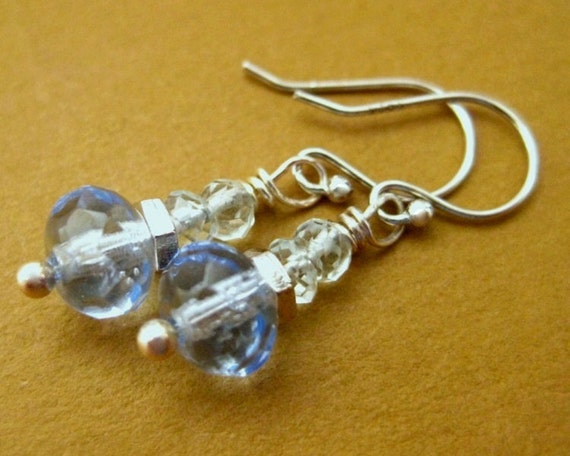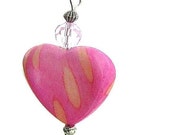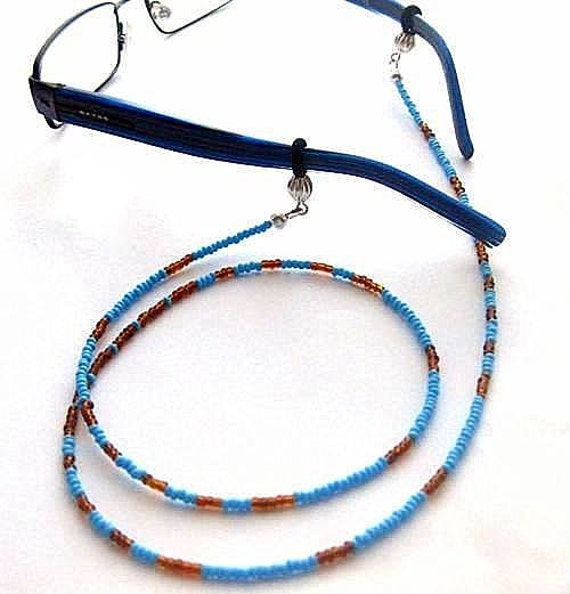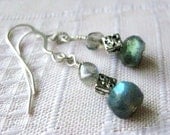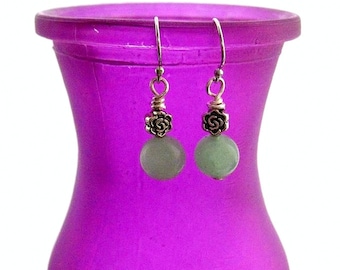Oh
Goody, we've landed on the letter
G in my ABC of jewellery! This is a not-too-comprehensive guide to materials and techniques I use as well as inspirations and design.
G is for
Gemstones,
Glass,
Garnets, and let's not forget
Green, a colour usually prevalent in
my Etsy shop! Again, I am splitting this article into two. The second part will be published on Thursday coming.
 |
| rose quartz, own photo |
Gemstones are precious and semi precious stones used for decorative jewellery and accessories. Traditionally, the more valuable 'precious' stones have always been diamond, sapphire, emerald and ruby. However, the boundaries between precious and semi precious stones are becoming a little fudged now with very exclusive garnets, for example, crossing the divide while manufactured diamonds slide down the scale in the opposite direction.
 |
| selection of semi precious gemstones, own photo |
The family of gems generally accepted as semi precious stones encompasses an extensive list of rocks and minerals (here's a
list from Wikipedia.) You are most likely familiar with a lot of them. Most have a long tradition as healing stones and have been attributed special properties and/or are tied to certain beliefs. Many are designated birthstones. Born in February, amethyst is my birthday gem, for example.
Blue flash labradorite earrings Seafoam amazonite earrings
The most widely found category of stone found on the planet is feldspar, covering about 60% of the planet's surface. Feldspar is defined as a rock forming mineral, characteristically made up of pale or clear crystals consisting of
aluminoscilicates of sodium, calcium and potassium. That's all the science you will get from me. I promise. The word 'feldspar' means 'field stone' in German. Labradorite is a fine example in this family as is amazonite (pictured above.)
 |
| some varieties of the quartz (own photo) |
The second largest family is quartz and this breaks down into another long list of minerals including
rose quartz,
amethyst,
citrine,
clear quartz crystal (aka rock crystal) and more. Quartz is a very hard mineral and it is found all over the globe.
 |
| Newgrange (photo sources on Wikimedia Commons) |
In Ireland, it is most famously seen glistening in the Neolithic tombs of Newgrange. Click
here to read my previous post about this mystical place and the pendant it inspired me to make.
Connemara marble pendant Cork red marble pendant
Marble is not technically classed as a gemstone. However, the definition fits, so our rare, indigenous Irish stones such as
Connemara marble,
Cork Red,
Kilkenny and Ulster white marbles may be considered as such. All are found only on this island and are in scarce supply. I proudly include these indigenous stones whenever I can get my hands on some decent pieces.
Though we do not have an important gemstone industry and many of the old mines are now closed, Ireland boasts a fair share of minerals. Most famously, a seam of amethyst can be clearly seen in the cliffs at
Keem beach, Achill island. Not many Irish people are aware of what other gems lie beneath our feet. Examples of what can be found include rock crystal in the South West, malachite and smithsonite in the West, beryl and calcite in the North West and pyrite in the midlands.
 |
| garnet earrings |
Garnets are one of my favourite gemstones. There is something very luxurious about this richly coloured silicate mineral, especially when contrasted with cool silver. It does come in other colours besides claret, green grossular garnet being the most famous after red.
Garnet is the birthstone for January and like many other gems, has a long tradition as a healing stone and has always been surrounded by myth. Once believed to protect soldiers in battle, the gem is often called 'the warrior stone.' You can read more in my previous post
'Garnets, Birthstone for January.'
Watch this space for part 2 featuring glass and some of it's forms.
***
More in this series:

























